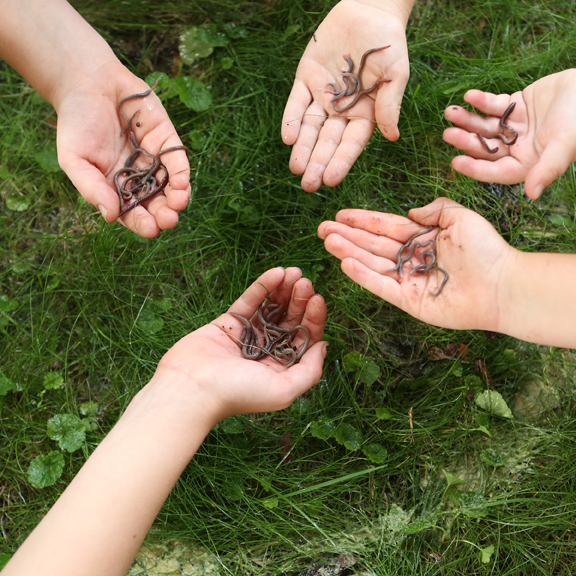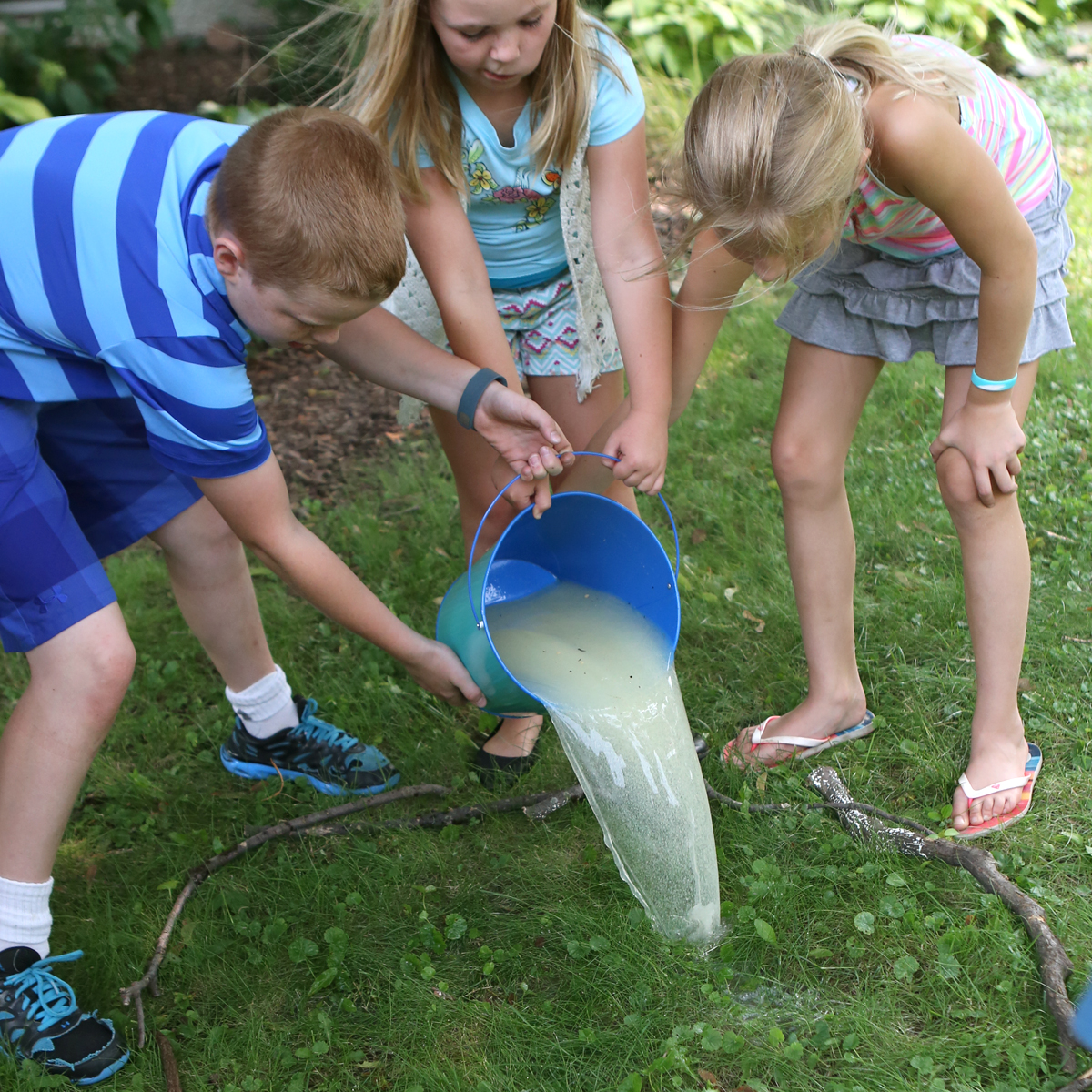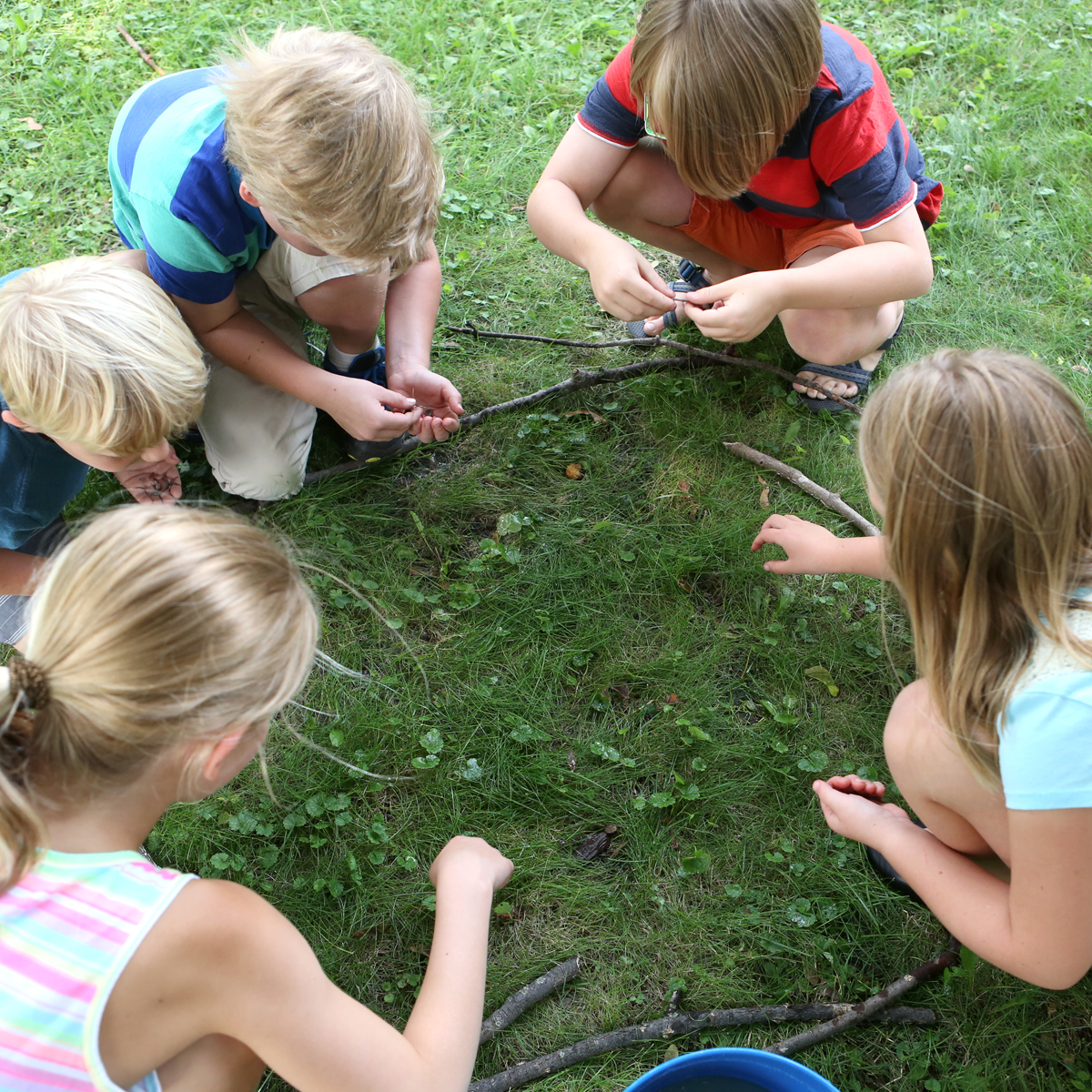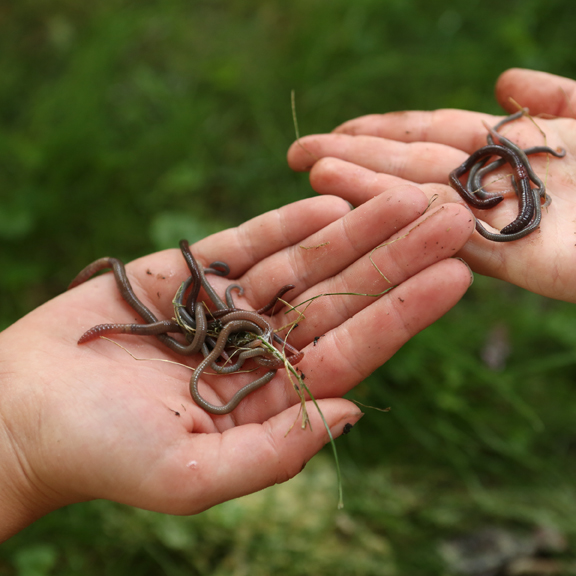Tag: outdoor science’
Earthworm Experiment: Alien Invaders!
- by KitchenPantryScientist

Earthworm Eruption from Outdoor Science Lab for Kids (Quarry Books 2018)
If you’re interested in studying the worms in your back yard, you can bring them to the surface using ground mustard seed dissolved in water.

Earthworm Eruption from Outdoor Science Lab for Kids (Quarry Books 2018)
Measure out a one square foot sample plot (35cmx35cm) with string and stakes, and pour about half of a your mustard mixture (1/3 cup ground mustard dissolved in 4 Liters of water) over the dirt in your grid. Be careful not to splash any in your eyes! Wait for the worms to come up, and when they’ve emerged completely, grab them and put them in a container. When they stop popping up, add the rest of the mustard mixture to the plot and wait for a second batch of worms to appear from deeper in the soil.

Earthworm Eruption from Outdoor Science Lab for Kids (Quarry Books 2018)
How many worms did you find? The Great Lakes Worm Watch is doing a study of worms, so you can preserve the worms and send them to their labs for identification, or you can try to identify them yourself. Great Lakes Worm Watch has other resources if you’re interested in learning more about Earthworms!

Earthworm Eruption from Outdoor Science Lab for Kids (Quarry Books 2018)
One of our favorite stops at the Minnesota State Fair is the Department of Natural Resources (DNR) building. After checking out some birds of prey, the fish pond and some monarch caterpillars, we stumbled on an entire room devoted to educating the public on the control of invasive species. Although I was familiar with buckthorn and Zebra Mussels, it was surprising to see the lowly earthworm represented alongside other more obvious dangers to Minnesota’s ecosystems.
We learned that the earthworms in Minnesota and the entire Great Lakes Region are non-native species, brought over from Europe long ago. They’re beneficial to farmers and gardeners, aerating the soil so water and other organic material can move through, but harmful to woodlands, where they disrupt the “Duff” layer of decomposing material on the forest floor, making it difficult for young plant to take root and grow. The lack of undergrowth affects the animal life as well, as hiding places and nesting grounds disappear.
If you like to fish or do worm composting, you can help! It’s very important never to discard unused worms in forests or even water (worms don’t drown.) Just throw them away in the garbage. Some worm mixes contain Asian earthworms of the genus Amynthas, which have become a threat in Minnesota. These worms are also called Jumping Worms since they are very active and lots of them can live together in one place causing lots of damage to forests.